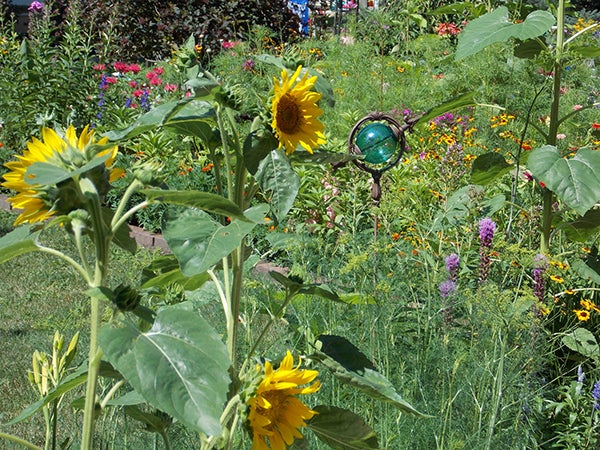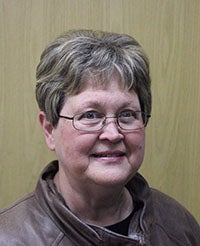Gardens bring in multitude of wildlife
Published 9:00 am Sunday, July 5, 2015

Sunflowers, liatris, beebalm,coreopsis, dill, kiss-me-over the garden gate and many other flowers attract wildlife to gardens. – Carol Hegel Lang/Albert Lea Tribune
Serendipity Gardens by Carol Hegel Lang
Have you visited Serendipity Gardens yet? If not I invite you to stop by and see that they are a different kind of gardens. Yes, I grow petunias and marigolds and even a few geraniums, but the gardens are very different from most gardens because they are a certified backyard wildlife habitat meant to bring in the birds, bees, butterflies and insects rather than people. You will also find plants that you may have only heard about before such as kiss-me-over the garden gate, goatsbeard, muckdenia, bugbane and many other plants that are not commonly grown in gardens.
My gardens are cottage style and the plants are all very close together and almost wild looking. Many of the flowers in the cutting garden are self-seeders and they pop up randomly all over the garden. In the backyard I have a Japanese maple and Pagoda dogwood, along with a lovely shrub that attracts both butterflies and bees called clethra.
Milkweed nearly takes over the garden space under my kitchen windows. I can sit at the table and watch the monarch butterflies and many other insects feeding on the sweet nectar from the flower heads. While watering this garden the other day I was amazed at how many damselflies were on the milkweed and daylilies that grow next to it. When I sprayed the water it was like a swarm of insects flew up into the air.
The wrens have been collecting insects that hide among the vines growing up the pergola and fence. Every day I have the pleasure of listening to their lovely songs back and forth with each other. All of the feeders are busy when I am out working in the gardens and so are the birdbaths. Toads seem to enjoy the oval garden where it is a bit damper and I will see them jumping around under the flowers.
Although all of my gardens are what I would consider small, they are huge on the scale of attracting wildlife. Even during the summer I have suet feeders out and woodpeckers and nuthatches are always enjoying a tasty morsel. The fuchsia plants attract the hummingbirds all summer long and I so enjoy watching them fly from one plant to the next. Tickseed coreopsis is another of the self-seeders and all summer the bees are happy to find a place for sweet nectar.
In spring jack-in-the pulpit makes an appearance in several of the gardens and then later in the season they will have red berries on them. Ligularia The Rocket sends up tall yellow spikes in the garden along the west fence to add a bit of color to the gray of the wooden fence. A darling flower that came from my mother’s garden is a member of the trollium family, but I call them yellow button flowers. My David Austin rose is being overtaken by the baptisia next to the garden shed.
The berries on the ‘Pagoda’ dogwood will soon turn deep purple and the robins and blackbirds will devour them in only a few days. I love watching the birds after they have eaten their share as they seem to be a bit intoxicated. Verbena bonariensis are in a couple of the gardens and once they start to flower you will see hummingbirds and butterflies on them all the time.
This year I don’t have any tithonia growing as the seeds I planted never germinated in the cold, wet month of May. I will miss them and so will the butterflies. Some years they have grown eight feet tall and are covered with monarchs. At least the Joe-pye weed is growing well in all of the gardens and they will attract not only butterflies, but many other kinds of insects.
No matter which garden I stop at and take a look around there is abundant wildlife and insects everywhere. While weeding I noticed the cosmos were opening and a few flies and bees had already found them. Robins were looking for worms in the grassy areas and a mourning dove was cooing under the feeder as it sorted through the discarded seeds on the ground. A chickadee was headed for the sunflower seeds while several nuthatches were on the peanut feeders.
“A sensitive plant in a garden grew, and the young winds fed it with silver dew, and it opened its fan-like leaves to the light, and closed them beneath the kisses of night.” — Percy Bysshe Shelley
Carol Hegel Lang is a green thumb residing in Albert Lea. Her column appears weekly. Email her at carolhegellang@gmail.com.



